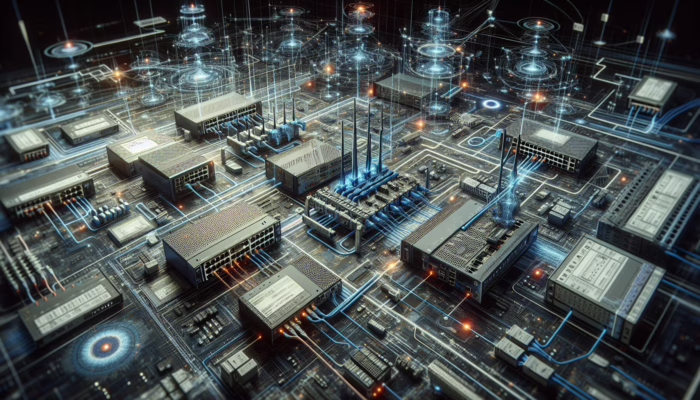The field of healthcare has experienced significant advancements in recent years, largely due to the transformative impact of technology on service delivery. As the industry progresses, the critical importance of interoperability in data management has become increasingly evident. Interoperability signifies the capability of diverse systems and devices to exchange and interpret data, fostering seamless communication and collaboration among healthcare professionals. In this article, we will explore the essential role of interoperability and its profound influence on creating a unified healthcare landscape.
Comprehending the Essential Role of Interoperability in Healthcare
Interoperability serves as the foundation for effective data management within the healthcare landscape. It ensures that various systems, such as electronic health records (EHRs), medical devices, and other healthcare applications, can communicate efficiently and share information in a consistent format. This seamless flow of data not only enhances decision-making processes but also significantly improves patient care coordination and overall healthcare outcomes. By cultivating an environment where information is readily available and interpretable, interoperability leads to superior health services, benefiting both patients and healthcare providers alike in their pursuit of excellence.
Delving into the Different Types of Interoperability in Healthcare
In the context of healthcare, there are three main types of interoperability that are vital to understand:
-
Foundational Interoperability: This initial level concentrates on the fundamental exchange of data between various systems. It establishes the necessary technical compatibility that enables systems to communicate effectively. By providing a solid foundation for further data exchange and collaboration, foundational interoperability plays an essential role in ensuring that healthcare professionals can access critical information when it is most needed.
-
Structural Interoperability: This type involves the standardisation of data formats and the organisation of data elements within those formats. It guarantees that information can be accurately interpreted and understood by the receiving systems. By creating a common structural framework, healthcare professionals can easily access and interpret data, leading to improved decision-making and enhanced patient care across the board.
-
Semantic Interoperability: Representing the highest level of interoperability, semantic interoperability focuses on the meaning of the data being exchanged. It allows systems to consistently comprehend and interpret information, regardless of its source or destination. This level of interoperability promotes accurate and meaningful clinical decision-making, empowering healthcare professionals to trust the reliability and consistency of the data they receive, which is crucial for effective patient care.
Examining the Significant Benefits of Interoperability in Healthcare
Embracing interoperability offers numerous advantages that greatly benefit healthcare providers, patients, and the overall healthcare ecosystem. Let us investigate some of the key benefits:
-
Improved Care Coordination: Interoperability enables healthcare professionals to access comprehensive patient information from multiple sources, resulting in enhanced care coordination. With the ability to seamlessly exchange data, healthcare teams can develop a holistic view of patients’ healthcare journeys, which facilitates well-informed decisions and personalised care plans. This comprehensive approach not only improves patient outcomes but also significantly boosts patient satisfaction levels, creating a positive feedback loop in healthcare delivery.
-
Enhanced Patient Engagement: The power of interoperability empowers patients to access their health records, lab results, and other vital information. This capability encourages them to actively participate in their own care, fostering a collaborative and engaged relationship between patients and healthcare providers. Through secure patient portals and mobile applications, individuals can conveniently manage and access their health information, enabling informed decisions about their well-being and enhancing their overall healthcare experience.
-
Reduced Errors and Duplication: Interoperability plays a crucial role in significantly lowering the chances of errors resulting from manual data entry or miscommunication. It minimises the duplication of tests and procedures, thereby conserving valuable time and resources while preventing unnecessary expenses. With access to accurate and up-to-date patient information, healthcare professionals can make informed decisions about diagnosis, treatment plans, and medication management, subsequently enhancing patient safety and the overall quality of care delivered.
-
Efficient Healthcare Delivery: By facilitating streamlined data exchange, interoperability removes the necessity for repetitive paperwork and manual processes. This improvement enhances operational efficiency and allows healthcare providers to dedicate more time to patient care. The automation of data exchange alleviates the administrative burden, freeing up essential resources and enabling healthcare professionals to concentrate on delivering high-quality care, ultimately improving patient outcomes across the board.
-
Facilitating Research and Innovation: Interoperability enables the aggregation of extensive clinical data, creating opportunities for research, population health management, and breakthroughs in medical research and innovation. By securely sharing de-identified patient data, healthcare organisations can contribute to medical research, clinical trials, and the development of new treatments and therapies. This collaborative data-sharing approach fosters innovation and drives advancements within the healthcare sector, making significant contributions to improving healthcare delivery.
Tackling the Challenges in Achieving Effective Interoperability
While the benefits of interoperability are substantial, implementing and achieving seamless data exchange can be hindered by various challenges. Let us explore some significant obstacles:
-
Lack of Standardisation: The absence of widely accepted standards and protocols considerably obstructs interoperability efforts. To address this challenge, industry stakeholders must collaborate to establish common standards and guarantee their widespread adoption. By promoting the use of standardised data formats, terminologies, and communication protocols, healthcare organisations can overcome barriers to interoperability and support effective data exchange, paving the way for improved healthcare delivery.
-
Data Security and Privacy Concerns: As healthcare systems become increasingly interconnected, safeguarding the security and privacy of patient data is paramount. Robust privacy measures, encryption techniques, and strict access controls must be implemented to protect sensitive information from unauthorised access. Healthcare organisations must adopt comprehensive cybersecurity strategies to shield patient data from breaches and cyber threats, ensuring the integrity and confidentiality of healthcare information.
-
Legacy Systems and Infrastructure: Many healthcare organisations still rely on outdated legacy systems that lack the necessary capabilities for seamless interoperability. Upgrading these systems and investing in modern infrastructure is essential to overcoming interoperability barriers. By adopting interoperable systems and advanced technologies, healthcare organisations can ensure compatibility, facilitate data exchange, and promote seamless communication across various platforms, ultimately enhancing patient care.
-
Cost and Resource Constraints: Implementing interoperability solutions frequently requires significant financial investments and dedicated resources. Healthcare organisations must allocate appropriate budgets and personnel to effectively drive interoperability initiatives. Collaborative efforts among healthcare providers, government bodies, and technology vendors can help secure the funding and resources necessary to overcome interoperability challenges and achieve desired outcomes.
Envisioning the Future of Interoperability in Healthcare
As the healthcare industry continues to evolve, the importance of interoperability will become even more pronounced. Future innovations in technology, including the Internet of Medical Things (IoMT) and artificial intelligence (AI), will further underscore the necessity for seamless data exchange and interoperability. These emerging technologies have the potential to generate vast quantities of data that could revolutionise healthcare delivery and patient outcomes. However, without effective interoperability, harnessing this data for meaningful insights and enhanced care will prove challenging and hinder progress.
To cultivate a cohesive healthcare ecosystem, it is crucial for stakeholders across the industry to collaborate in addressing challenges, establishing standards, and embracing interoperability as a fundamental principle. By doing so, healthcare providers can leverage the power of data to deliver personalised, efficient, and patient-centred care. Interoperability will facilitate seamless data exchange, empower patients, reduce errors, enhance research capabilities, and drive innovation within the healthcare landscape, ultimately leading to improved health outcomes for all.
In summary, interoperability plays a vital role in unifying healthcare through seamless data exchange and communication among various systems. It enhances care coordination, boosts patient engagement, minimises errors, and encourages innovation. Overcoming challenges such as standardisation, data security, legacy systems, and resource constraints is crucial for achieving effective interoperability. Looking ahead, the healthcare industry must continue to prioritise interoperability to unlock the full potential of technology in providing high-quality, patient-centric care.
Q1: What is interoperability in healthcare?
A1: Interoperability refers to the ability of different systems and devices in healthcare to exchange and interpret data, enabling seamless communication and collaboration among healthcare professionals.
Q2: What are the types of interoperability in healthcare?
A2: There are three primary types of interoperability in healthcare: foundational interoperability, structural interoperability, and semantic interoperability.
Q3: What are the benefits of interoperability in healthcare?
A3: Interoperability in healthcare brings forth numerous benefits, including improved care coordination, enhanced patient engagement, reduced errors and duplication, efficient healthcare delivery, and facilitation of research and innovation.
Q4: What challenges are associated with interoperability in healthcare?
A4: Some key challenges associated with interoperability in healthcare include lack of standardisation, data security and privacy concerns, legacy systems and infrastructure, and cost and resource constraints.
Originally posted 2024-06-18 18:28:32.
The post Interoperability in Data Management: Unifying Healthcare Efforts appeared first on Healthcare Marketing Service.







